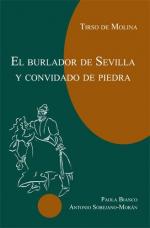|
This section contains 3,915 words (approx. 14 pages at 300 words per page) |

|
SOURCE: “New Clothes, New Roles: Disguise and the Subversion of Convention in Tirso and Sor Juana,” in Romance Languages Annual, Vol. 1, 1989, pp. 500-04.
In the following essay, Larson considers the implications of cross-dressing in the comedies of de Molina and Sor Juana.
In an article on role change in Calderonian drama, Susan Fischer reminds us that that the “essence of the theater is change—the theoretically temporary metamorphosis of an actor into a character he is to portray onstage” (73). What we find in any number of Golden Age plays is the literalization of that metaphor, in which characters assume other roles in addition to those assigned by the dramatist, often utilizing disguises to accomplish the role change. In the theater of the Golden Age, the convention of the woman who dresses like a man was relatively commonplace, reflecting a liberating experience in all senses of the word: male...
|
This section contains 3,915 words (approx. 14 pages at 300 words per page) |

|


